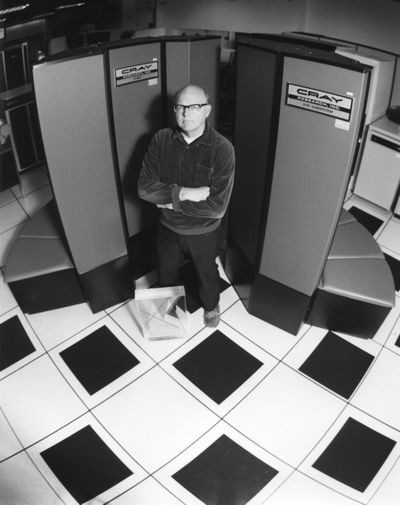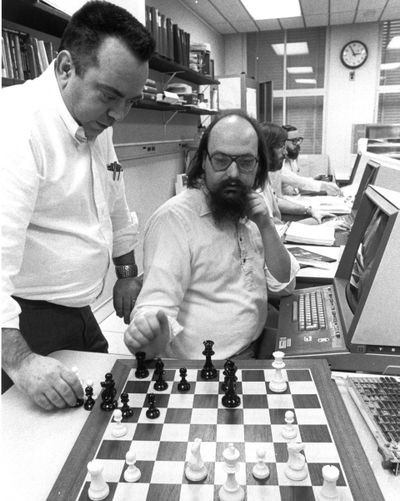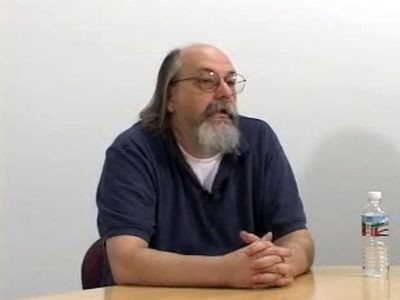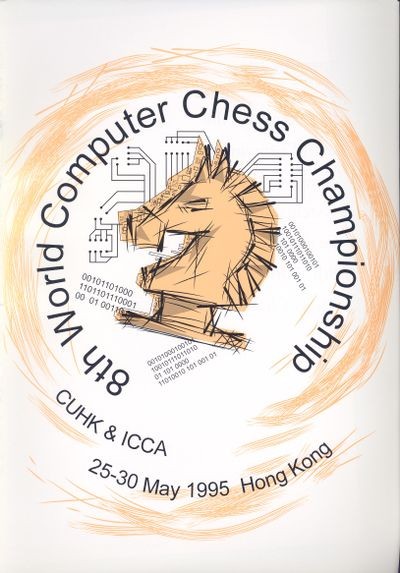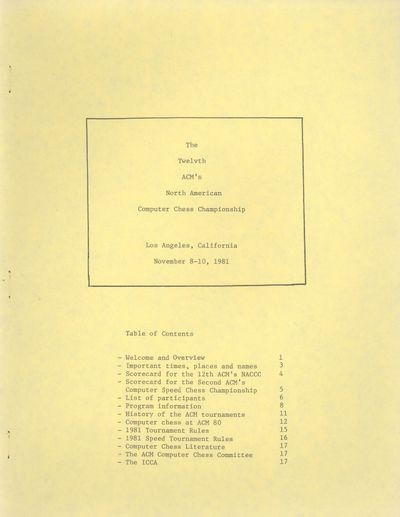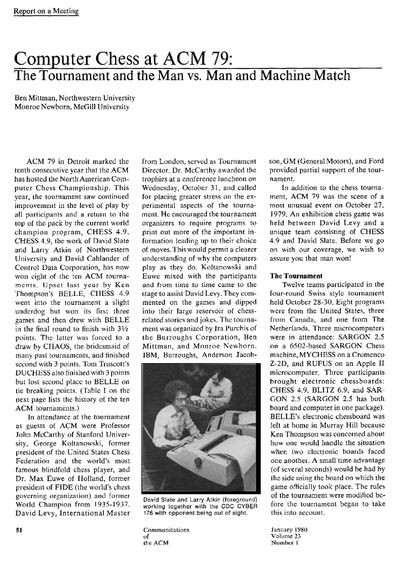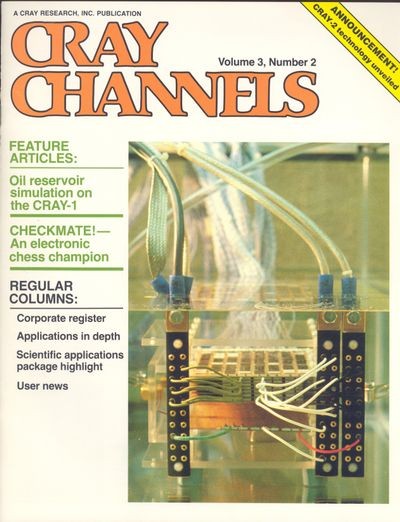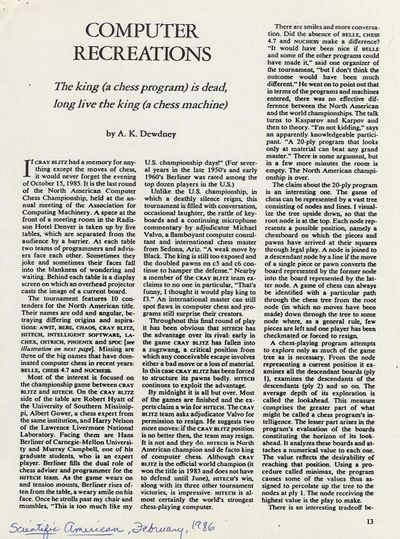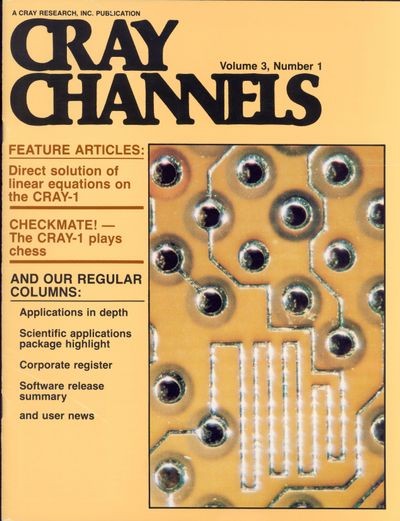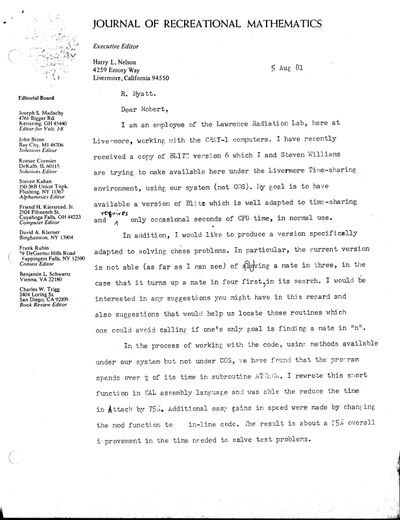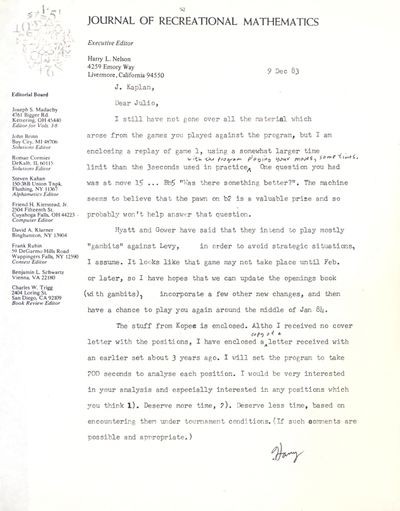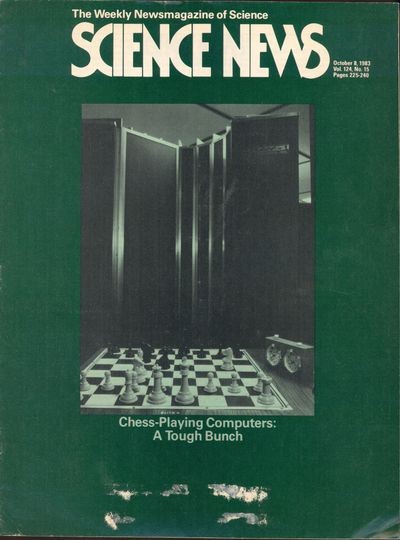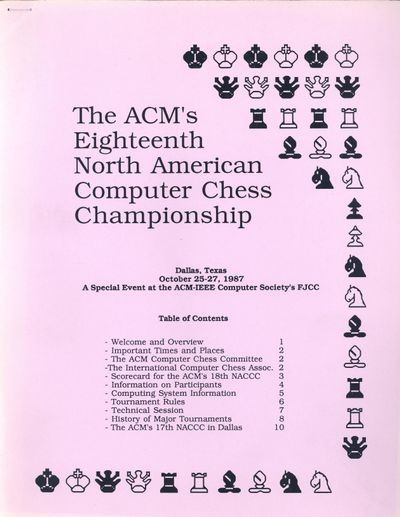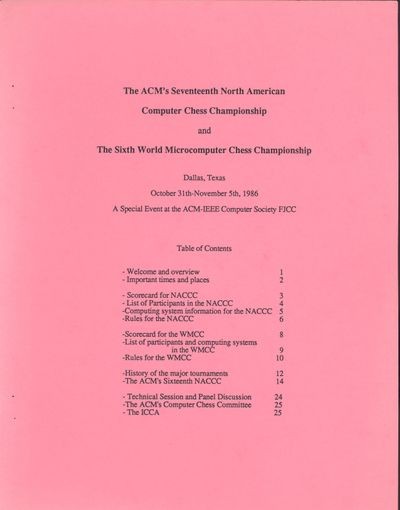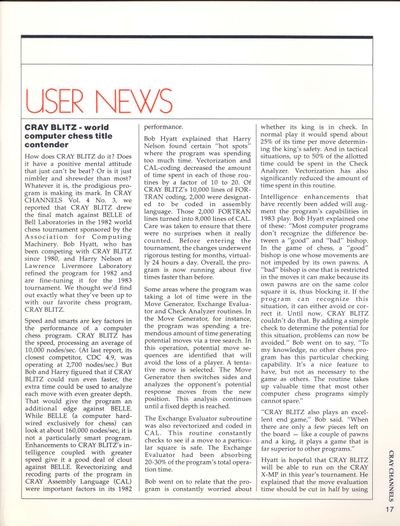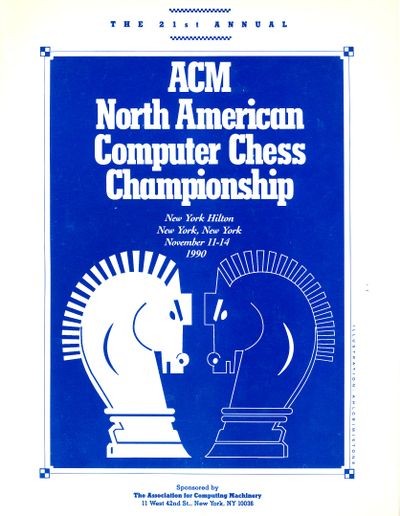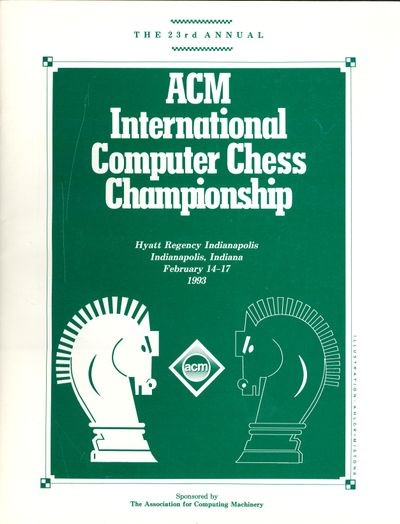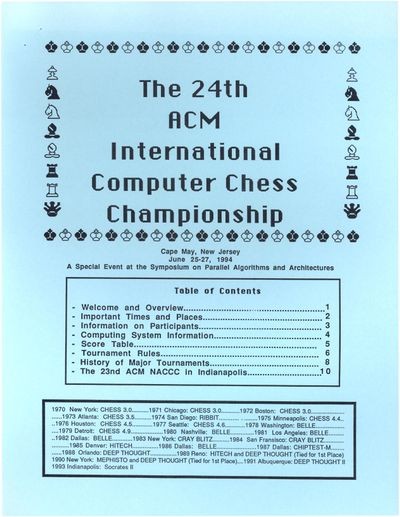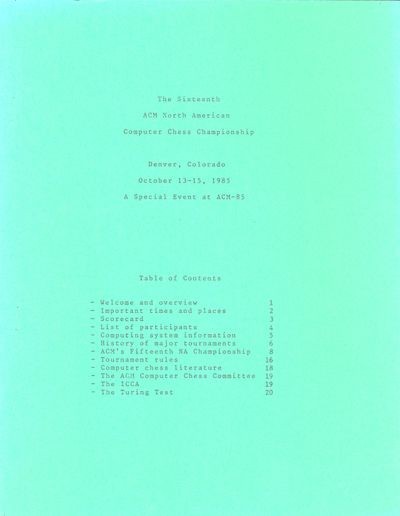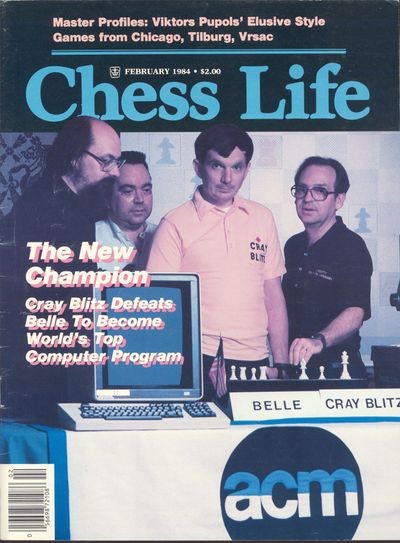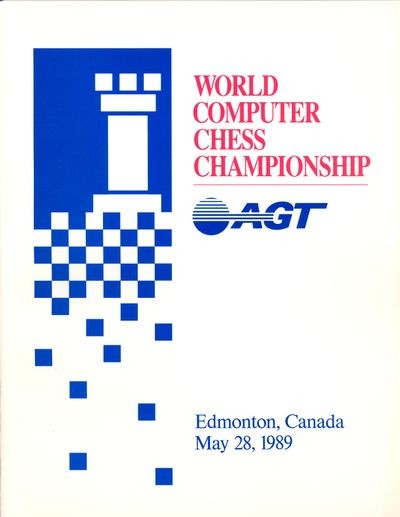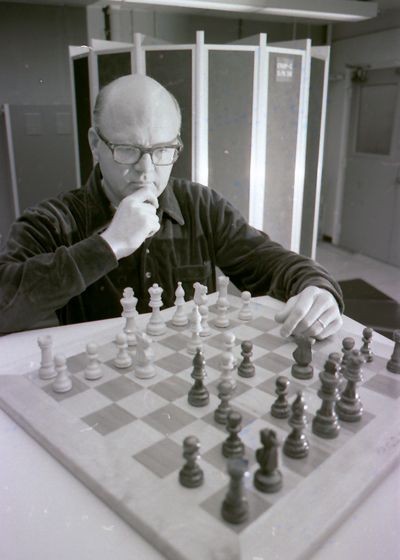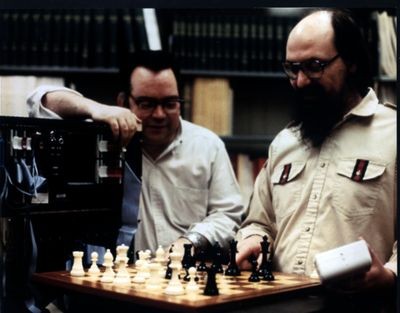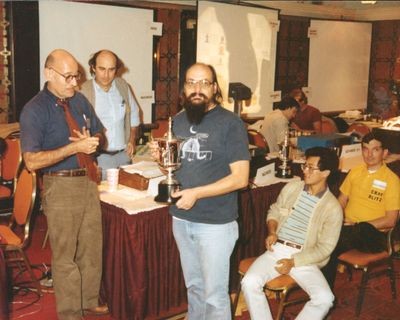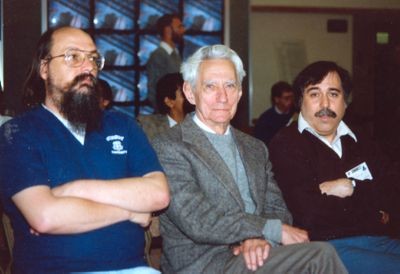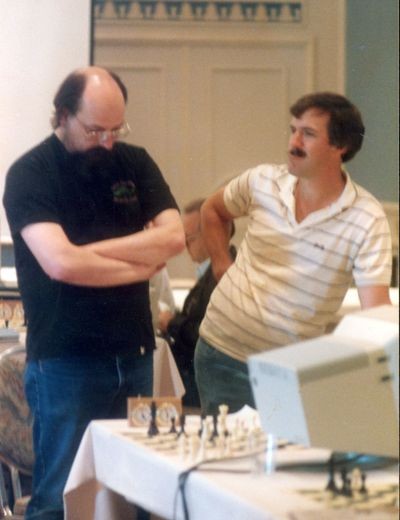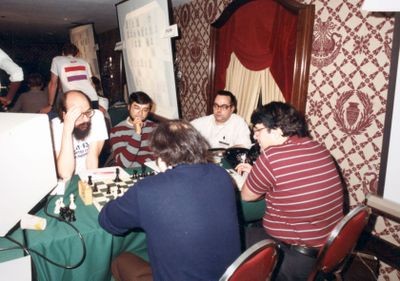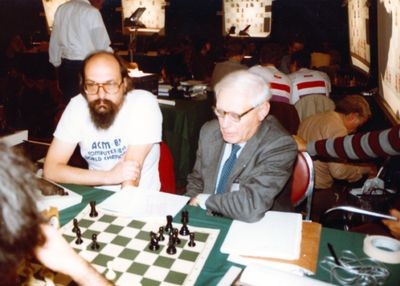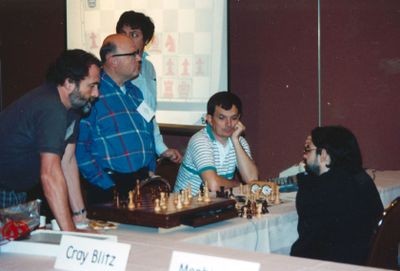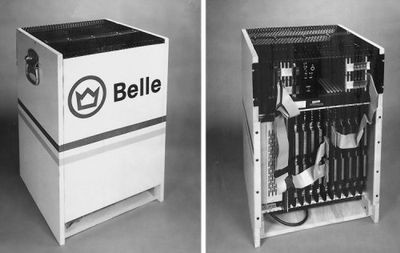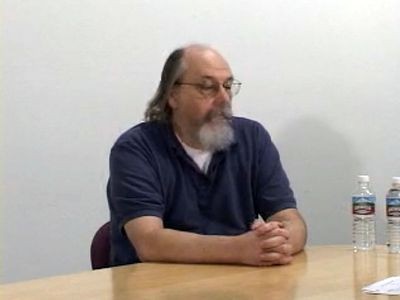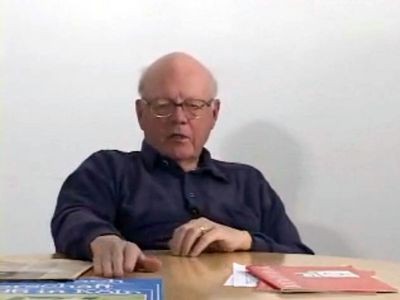Brute Force vs Knowledge
In the early years of attacking the chess problem there were two approaches. The first was a knowledge-based search that tried to make programs recognize patterns and formulate chess strategies much like people do.
The second was a "brute force" approach that used efficient search algorithms to look more exhaustively at all positions to a certain depth during a player's allotted time. Programmers took advantage of what computers do best–calculation–rather than trying to get them to imitate human thinking.
In 1977 at Bell Laboratories, Ken Thompson and Joe Condon took the brute force approach one step further by developing a custom chess-playing computer called Belle. By 1980 it included highly specialized circuitry that contained a "move generator" and "board evaluator," allowing the computer to examine 160,000 positions per second. This approach was so effective that in 1982 at the North American Computer Chess Championships (NACCC), this $17,000 chess machine beat the Cray Blitz program running on a $10 million supercomputer.



